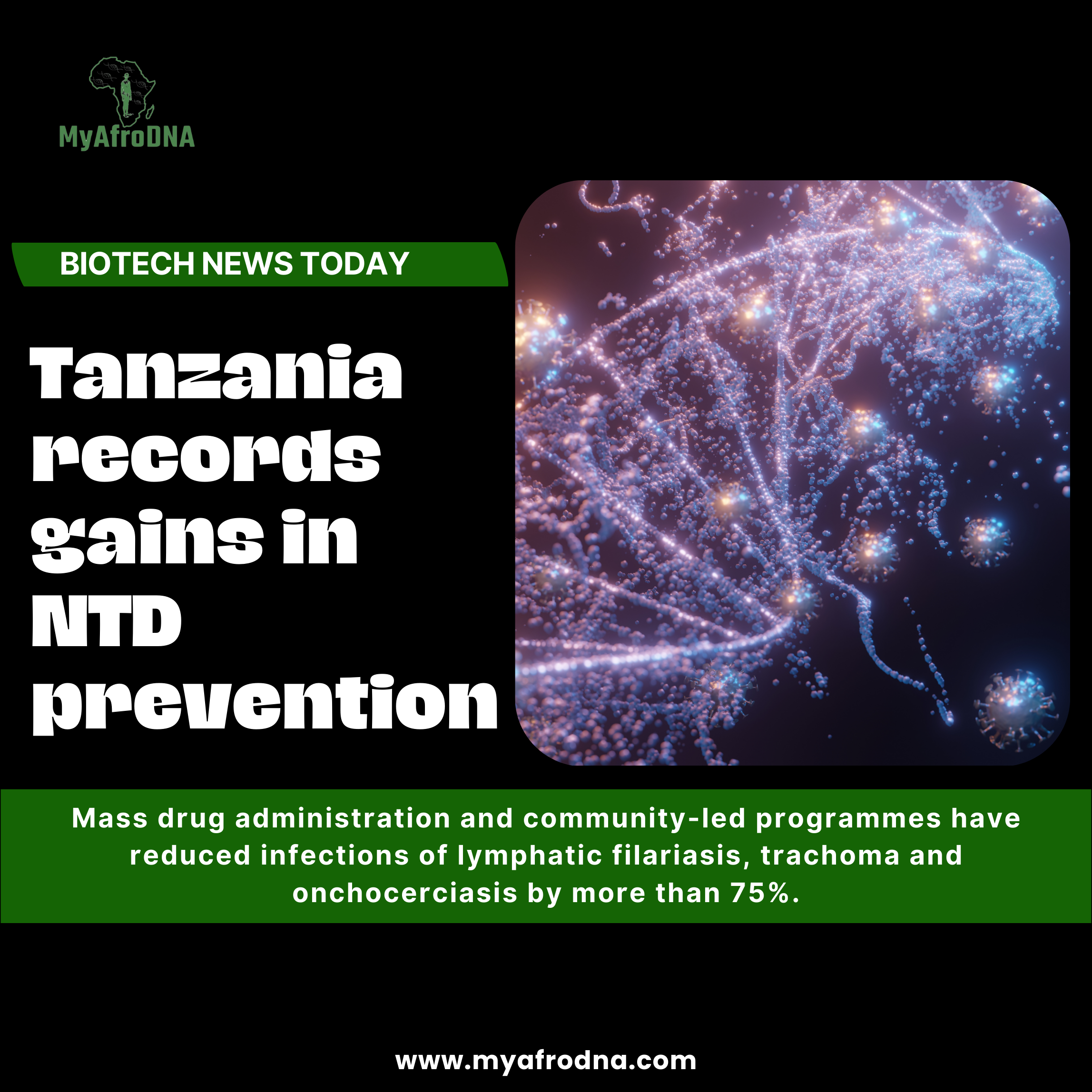
A recent feature in Nature Africa highlights Tanzania’s remarkable progress in its decades-long battle against neglected tropical diseases (NTDs). Through coordinated mass drug administration, targeted surveillance, and strong community participation, the country has achieved a more than 75% reduction in key NTD infections, including lymphatic filariasis, trachoma, schistosomiasis and onchocerciasis.
This public-health milestone did not happen overnight. It is the result of consistent government investment, cross-sector partnerships, and the active involvement of local health workers who understand the unique cultural and environmental contexts of their communities. Village volunteers have played a crucial role in distributing medicines, tracking cases and ensuring that interventions reach even the most remote populations.The article also highlights that Tanzania’s approach is adaptable. For example, as prevalence levels dropped, the country shifted from broad mass treatment campaigns to more precise surveillance systems, using community data to identify hotspots and allocate resources more efficiently.
This transition demonstrates the power of combining field-driven insights with data-led public-health decision-making.For a company like MyAfroDNA, Tanzania’s progress offers a compelling model for African-led health innovation. It reinforces an essential truth: African health systems are not passive recipients of external interventions. They are active, evidence-driven and capable of delivering measurable, population-level impact when local leadership is centred.These lessons are highly relevant to our molecular-testing, biobanking and biospecimen work.
Sustainable impact in genomics requires:partnerships that elevate community expertise,programmes built on local context rather than imported assumptions, andlong-term models that integrate scientific data with lived realities.Tanzania’s success in reducing NTD burdens is more than a public-health victory. It illustrates what becomes possible when data, community participation and local ownership intersect. As MyAfroDNA advances its African-centred genomics agenda, this achievement reminds us of the responsibility — and opportunity — in supporting African science, strengthening community-driven systems and amplifying homegrown impact.
Read the full article here
Africa is achieving one of its most remarkable public-health milestones in recent memory: the continent has reported a 28% drop in tuberculosis (TB) incidence and a 46 % decline in TB-related deaths, figures that surpass global targets and highlight a critical shift in disease control capacity.
This progress comes despite persistent challenges: constrained funding, limited infrastructure, and complex cross-border dynamics across Africa’s health systems. Yet it also underscores an important truth: when scientific tools, coordinated policy, and local leadership align, even historically burdensome diseases can be brought under control. For organisations working in molecular diagnostics and biospecimen services like yours, this achievement offers both inspiration and context.
At MyAfroDNA, this success story reinforces our core mission: making high-quality molecular testing accessible across Africa. As TB incidence and mortality decline, the demand for accurate diagnostics, pathogen genomics, and robust biosamples becomes ever more critical. Lower TB rates elevate the importance of refined testing services that can support surveillance, differential diagnosis, and broader public-health tracking. Moreover, biobanks and specimen-sharing frameworks become integral in documenting evolving pathogens and designing targeted interventions.
In practical terms, this means we must scale our molecular-testing infrastructure, strengthen our collaboration with health systems, and ensure our biospecimens meet rigorous standards. By doing so, we contribute to a future where African health systems are not just battling disease but staying ahead of it. The continent’s TB victory is not just one battle won; it’s a warning light for the next frontier of diagnostics, genomics, and equitable health innovation.
Read the full article here: Africa exceeds global tuberculosis targets, despite funding squeeze
Explore how MyAfroDNA’s molecular-testing and DNA-diagnostic services are helping build Africa’s health-tech future. Learn more about our services to learn more and partner with us.
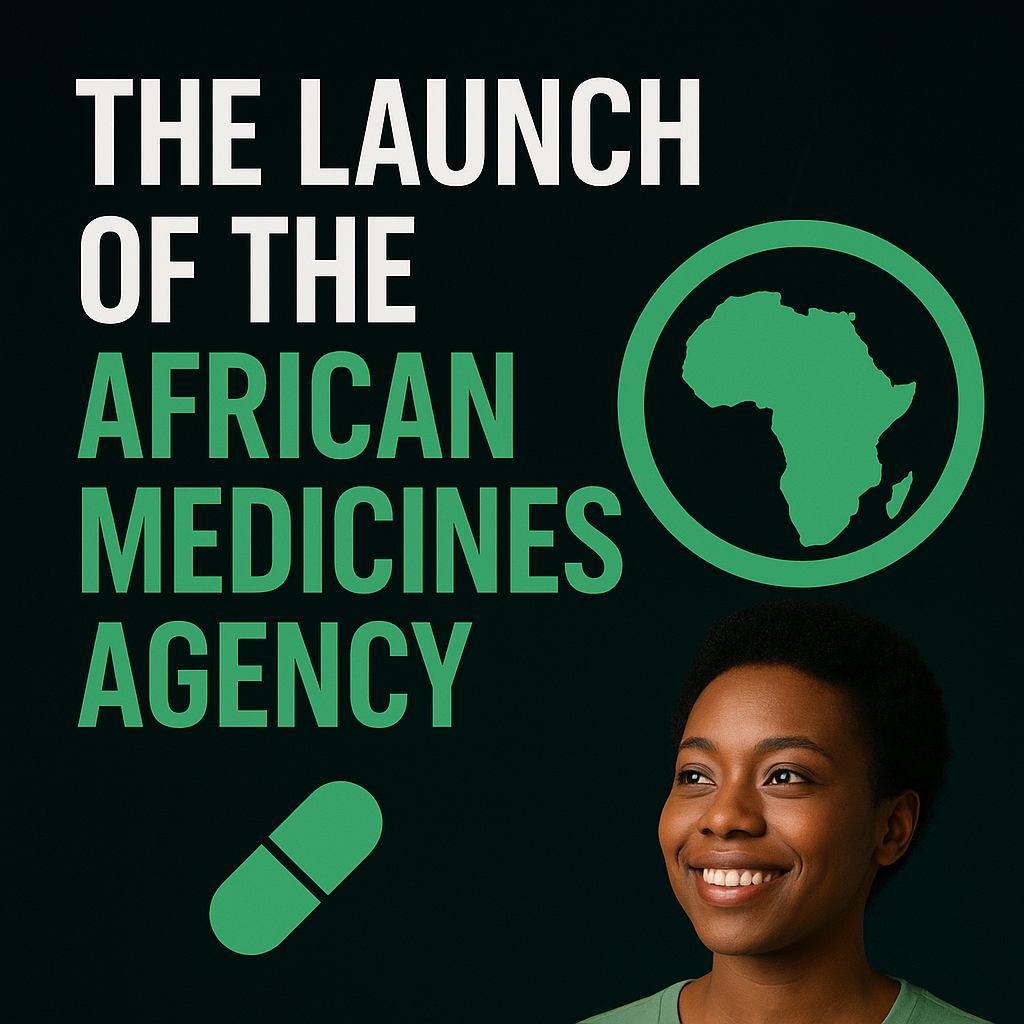
The official launch of the African Medicines Agency (AMA) marks a historic turning point for health innovation and pharmaceutical regulation across the continent. Established to streamline the approval and monitoring of medical products, the AMA aims to unify Africa’s fragmented regulatory systems and strengthen the fight against counterfeit or substandard medicines.
According to a recent Nature article, the creation of this central regulatory body promises to improve access to safe, effective, and affordable healthcare solutions. It also paves the way for biotech growth, ensuring that diagnostic tools, vaccines, and molecular testing technologies meet shared standards across African nations. For biotech companies, researchers, and laboratories like MyAfroDNA, this move signals greater collaboration and credibility within global scientific frameworks.
However, the article also points out the challenges ahead. Differences in national policies, limited funding, and uneven political commitment could slow the pace of implementation. To truly succeed, the AMA will require consistent investment in local expertise, capacity building, and transparent governance.
At MyAfroDNA, we see this milestone as an invitation to deepen our role in Africa’s biotechnology ecosystem. As a molecular testing, DNA diagnostics, and biobanking company, our work depends on strong regulatory systems that protect patients and ensure scientific integrity. The AMA’s commitment to standardized, ethical practices aligns perfectly with our mission to make accurate, reliable testing accessible across Africa.
Further reading: What the launch of the African Medicines Agency means for drug and health regulation – Nature (2025)
Explore how MyAfroDNA’s molecular testing and DNA diagnostic services are setting new standards for biospecimen quality and public health in Africa. Visit www.myafrodna.com to learn how we’re advancing Africa’s biotech future, one test at a time.

A landmark study led by researchers from University College London (UCL) and published in Science Advances reveals a previously hidden depth of genetic diversity, migration, and admixture within African populations. Titled “Dense sampling of ethnic groups within African countries reveals fine-scale genetic structure and extensive historical admixture,” the research analysed 1,333 genomes from over 150 ethnic groups across Cameroon, Ghana, Nigeria, Sudan, and the Republic of the Congo.
The findings challenge the often simplistic narratives about African genetic history. The study uncovered fine-scale genetic structure within single countries, showing that even neighbouring ethnic groups may carry distinct ancestral lineages. For instance, western Cameroonian groups exhibit unique ancestry signatures reflecting the region’s long history of local kingdoms and cultural interactions.
Researchers also traced long-distance admixture events, linking populations in northern Cameroon and Sudan with distant groups, suggesting centuries of movement through trade, migration, and empire expansion. In Ghana and Nigeria, they detected intermixing patterns dating back more than 2,000 years, likely connected to shifts in climate and vegetation that encouraged population mobility and contact.
Beyond uncovering these complex patterns, the study highlights an essential truth: Africa’s genomic diversity cannot be fully understood through limited or external data. It underscores the urgency of expanding and diversifying African genomic datasets to ensure equitable representation in global genetics research.
For MyAfroDNA, this research reaffirms our mission to strengthen African-centric molecular testing and biospecimen sourcing for both research and precision medicine. Understanding these fine-scale patterns helps scientists interpret genetic variation more accurately, improving ancestry insights and health-related findings for African communities.
As Africa continues to shape the global genomic landscape, studies like this remind us that every region, community, and ancestry carries its own genetic legacy, one that deserves to be studied, respected, and represented on its own terms.
Read the full research here.
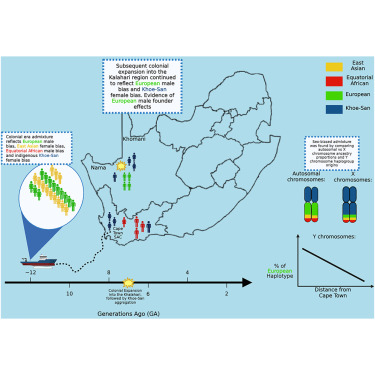
A new study published in The American Journal of Human Genetics reveals how centuries of colonial expansion and the Indian Ocean slave trade shaped South Africa’s genetic landscape, leaving a profound legacy of sex-biased admixture.
Researchers analyzed genetic data from over 1,400 individuals across South Africa to understand how migration and displacement transformed Indigenous communities. The findings show that European male settlers contributed disproportionately to genetic lineages, while Khoe-San women and enslaved women from South and Southeast Asia made major contributions to the maternal gene pool.
Interestingly, while genetic mixing around the Cape was continuous, northern Khoe-San communities experienced a single pulse of European admixture about six to eight generations ago. The Nama people showed unique founder effects, with about 15% of Y-chromosome lineages tracing back to Asia, reflecting the deep genetic impact of forced migrations during colonial times.
This research highlights how genomics can uncover stories of resilience and connection, offering new insight into Africa’s intertwined histories of movement, survival, and identity.
At MyAfroDNA, we are committed to advancing genomics research by providing high-quality African biospecimens and molecular testing services that help decode Africa’s diverse genetic heritage.
Click here for further reading.
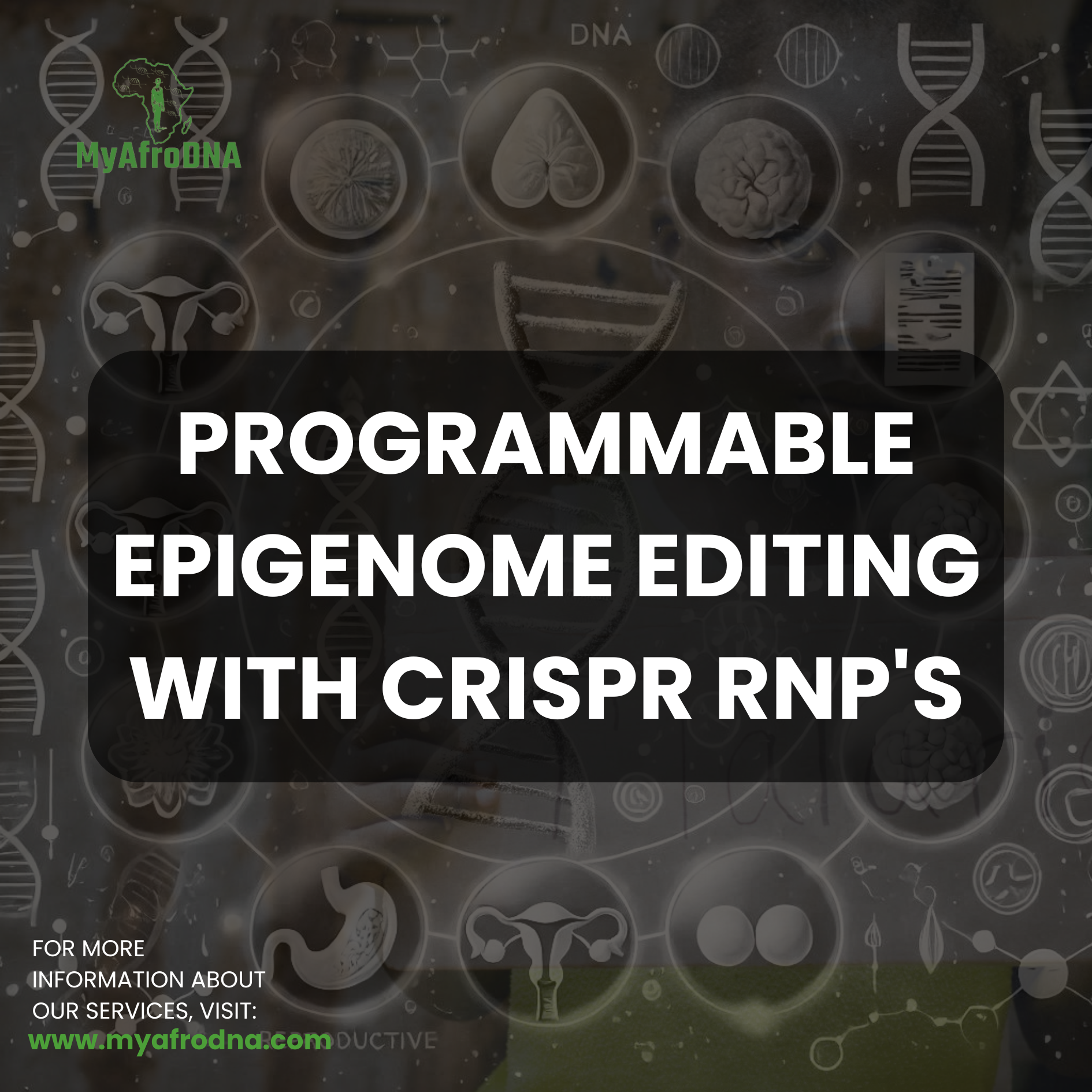
In a recent Nature Communications article, Alex M. Vakulskas, Andrew P. Goodman, Paola S. Guerena, William L. Hsieh, Benjamin M. Lane, Joseph N. Blattman, John L. Rinn, and Silvana Konermann present an innovative approach to overcoming one of the biggest challenges in epigenome editing: efficient delivery.
The team developed RENDER (Robust ENveloped Delivery of Epigenome-editor Ribonucleoproteins), a platform that packages CRISPR-based epigenome editors into engineered virus-like particles (eVLPs). Unlike viral vectors or plasmid delivery, which can pose risks of integration and cytotoxicity, RENDER delivers the editors as transient ribonucleoproteins (RNPs), ensuring high specificity and reduced off-target effects.This system was tested across a range of cell types, including iPSC-derived neurons and primary human T cells, showing durable gene silencing from a single treatment.
Remarkably, when applied to neurons carrying the MAPT V337M mutation, RENDER reduced Tau protein expression by more than 60% — a proof-of-concept with implications for treating neurodegenerative diseases.The ability to deliver programmable epigenome editors safely, transiently, and effectively represents a leap forward for gene regulation therapies. With continued optimization, this platform could accelerate progress in epigenetic drug development and broaden research applications. Click here for further reading.
At MyAfroDNA, we understand the importance of access to quality African biospecimens and molecular testing for advancing biomedical innovations like these. Partner with us to power your next research breakthrough.
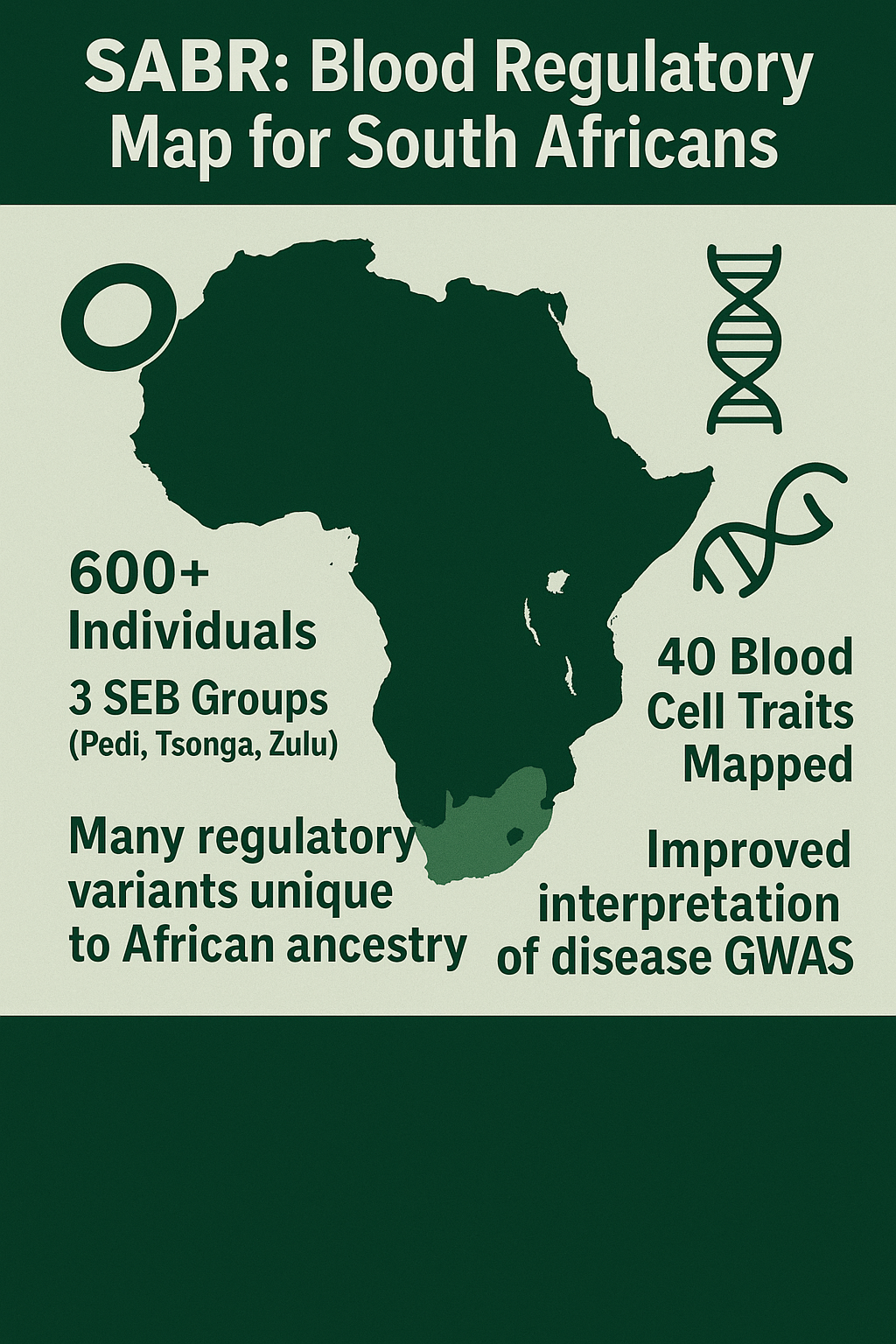
A new study introduces the South African Blood Regulatory (SABR) resource, a functional genomics dataset derived from >600 individuals from three South Eastern Bantu-speaking populations (Pedi/Bapedi, Tsonga, Zulu). The project integrates whole-genome sequencing and blood transcriptome data to map regulatory variation (expression QTLs / splice QTLs / cell-type interaction QTLs) for 40 blood-cell traits. One major finding: many regulatory variants are unique to individuals of African ancestry, and a substantial fraction are entirely absent in non-African populations.
Compared to the widely used GTEx project (which is heavily biased toward European ancestry), SABR detects more regulatory variants per gene—even though the sample size is smaller. The team also utilizes GWAS summary statistics from African-ancestry participants in the Pan-UK Biobank to demonstrate that SABR enhances the interpretation of genetic associations, specifically identifying putative causal genes and mechanisms linked to blood-related traits and disease risks that would otherwise be more difficult to discern.
SABR’s analysis connects changes in blood cell subtype levels with diseases like HIV, obesity, hypertension, asthma, and the effects of smoking. Several variants that influence disease-relevant cell types or levels are common in SABR but rare or unobserved elsewhere. The full SABR summary statistics are being made publicly available to support researchers.
Read the full article here
Antimicrobial resistance (AMR) poses a major threat to global health, and Africa is no exception. As pathogens evolve, our ability to treat common infections is becoming increasingly limited.
A new study published in Scientific Reports provides valuable insight into the genetic basis of AMR in Africa, focusing on Staphylococcus aureus, one of the most widespread and clinically significant bacteria.What the Study FoundResearchers analyzed 95 whole genomes of S. aureus collected from 11 African countries. The majority of these samples were human-derived, taken from blood, pus, urine, and wound sites.
Through bioinformatic analysis, they identified 33 antimicrobial resistance genes.Key findings include:Efflux pump mechanisms were the dominant form of resistance, allowing bacteria to actively expel antibiotics.Other resistance strategies included enzyme-mediated inactivation, target alteration, protection, and replacement.West and East Africa emerged as hotspots for the distribution of resistance genes, signaling the need for stronger surveillance in these regions.
These findings highlight the urgent need to expand genomic surveillance systems across the continent. Despite covering 11 countries, the study was limited by small sample sizes and lack of data from many African nations. This gap emphasizes the importance of building local capacity for sequencing, data analysis, and sample collection.For African health systems, this research serves as a reminder that combating AMR requires both global collaboration and homegrown solutions. Without comprehensive genomic data, it will be difficult to design effective treatment guidelines, track the spread of resistance, or prepare for future outbreaks.
At MyAfroDNA, we believe genomic research should be powered by African data, African expertise, and African innovation. Our mission is to provide high-quality biospecimens and molecular testing services that enable researchers to generate the insights needed to safeguard public health.AMR is a collective challenge, but with better data and stronger collaboration, Africa can take the lead in finding solutions.
Read the full publication here: https://www.nature.com/articles/s41598-025-01398-0
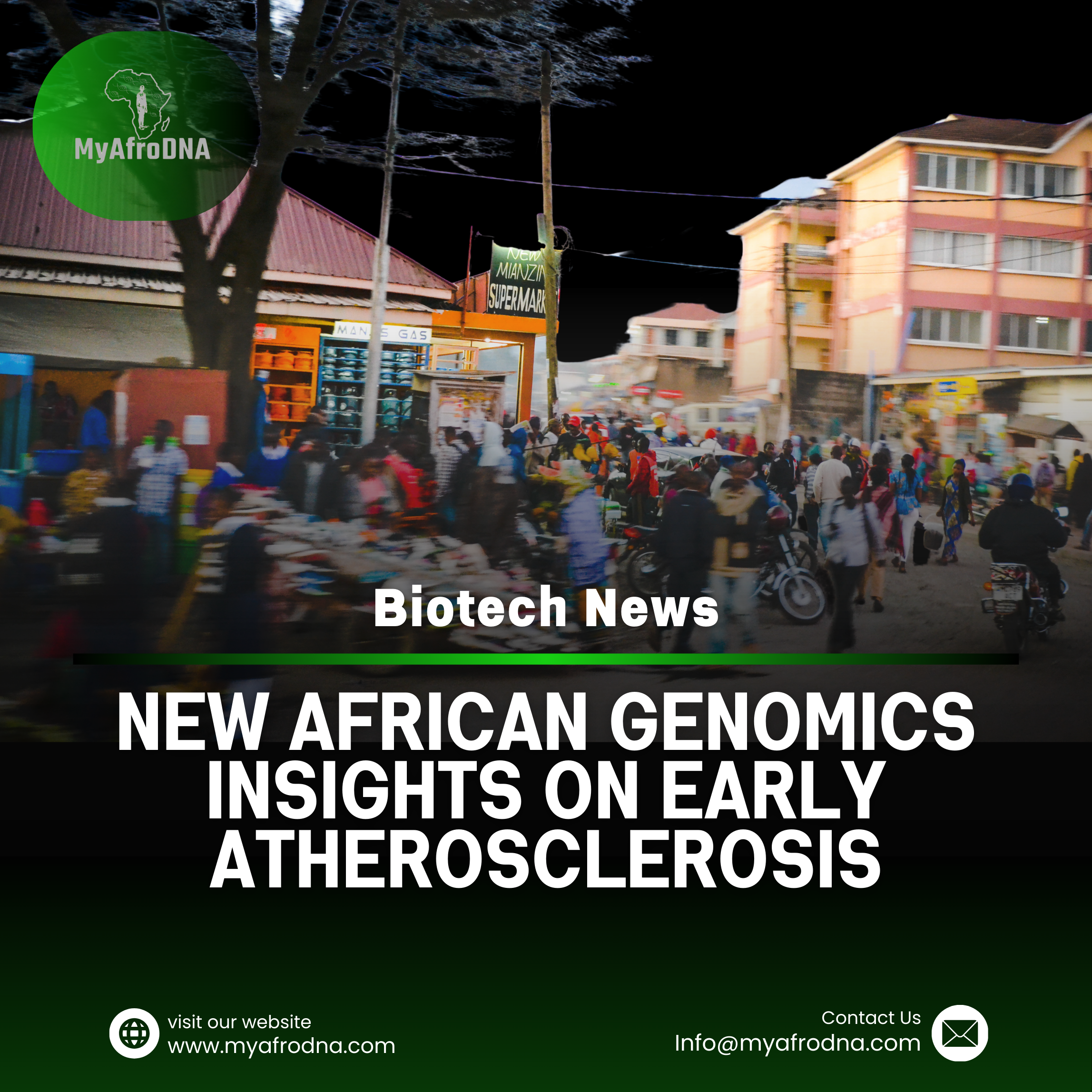
A groundbreaking study published in Nature Communications has revealed novel genetic variants associated with carotid intima-media thickness (cIMT), a key marker of early atherosclerosis, among nearly 8,000 adults from sub-Saharan Africa. The research, part of the AWI-Gen project, included participants from Burkina Faso, Ghana, Kenya, and South Africa and marks one of the largest genome-wide association studies (GWAS) on cardiovascular risk in African populations.
Two previously unidentified loci, SIRPA and FBXL17, were found to be significantly associated with cIMT, offering new insight into biological pathways involved in vascular health. Notably, the study also identified sex-specific genetic signals: SNX29 in men, and LARP6 and PROK1 in women, the latter two being enriched for estrogen response genes. These findings suggest different genetic mechanisms for cardiovascular risk between men and women.
Many of the variants identified in this African cohort are either rare or absent in European populations, emphasizing the critical need for diversity in genomic research. This study not only deepens our understanding of cardiovascular disease in African communities but also underscores the importance of building inclusive datasets to drive precision medicine. At MyAfroDNA, we champion this kind of Africa-led genomic science.
Read more on this research here: https://www.nature.com/articles/s41467-022-28276-x

